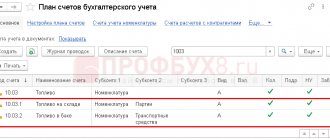What is the point of the experiment
As part of the pilot project, road transport participants will generate the necessary documents electronically and transfer them to each other and to the Ministry of Transport using the information system “Paperless transportation of passengers and cargo” (“Superservice 22”).
It is currently under development. Part of the system will be launched by October 31, after which feedback collection, analysis and refinement will begin. The Ministry of Transport plans that the transfer of transport documents into digital format will make document flow transparent for senders and recipients of goods, carrier companies and regulatory authorities, including the Federal Tax Service, the Ministry of Internal Affairs, etc. Transportation participants will save time and money on initial clearance.
What fuel consumption standards should we target in 2021?
Fuel consumption standards are in the Order of the Ministry of Transport of the Russian Federation dated March 14, 2008 No. AM-23-r “On the implementation of methodological recommendations “Consumption standards for fuels and lubricants in road transport.”
All Ministry of Transport limits are recommended, this follows from the very name of the regulatory legal acts, but it is worth adhering to them so that in the future it can be proven that the expenses are economically justified.
Based on the Ministry of Transport standards, approve your fuel and lubricant consumption standards for each model (make, modification) of vehicles in use.
Where and when will the experiment take place?
The experiment will last one month - from October 1 to October 30, 2020.
The pilot project will unfold in six regions: the Republic of Tatarstan, Krasnodar Territory, Moscow, Moscow, Ryazan and Kaluga regions. The Ministry of Transport intends to attract the largest regional carriers to it. Participation in the pilot project is voluntary. During the experiment, companies will continue to issue paper transport documents simultaneously with electronic ones.
Fill out the waybill with all the necessary details in a special service
What about other details?
Mandatory details of the waybill in 2021 can be divided into two categories. Details are in the table.
Two categories of mandatory waybill details
| Information for vehicle approval for operation | Information for accepting a document for accounting |
|
|
Additional requirements depend on the specifics of the organization’s activities. Such details may include:
- fuel consumption standards;
- vehicle route;
- saving (excessive consumption) of fuel.
Electronic waybill (ETrN)
A bill of lading is a document that confirms the existence of a transportation contract and serves as the basis for accounting for transport services provided and for settlements with the carrier. The document includes the information necessary to organize cargo transportation. Including:
- terms of delivery, loading and unloading of cargo;
- fines for demurrage or non-delivery of cargo;
- capacity, carrying capacity of the vehicle (vehicle);
- special conditions for cargo delivery (temperature conditions, storage periods, hazard class of the transported substance), etc.
Generate transport invoices in a web service for accounting and reporting Generate for free
During the experiment, shippers, carriers and consignees will transfer ETR through their electronic document management operators; record changes in transportation status, completion of delivery or return. Each participant organizes work in their own automated program.
Schematically, the exchange of ETrN will look like this:
1. The shipper creates a waybill in electronic form, signs with an enhanced qualified electronic signature (ECS), assigns a unique identification number and sends it through an EDF operator.
2. The carrier receives the ETRN. At the loading stage, fills in the fields intended to indicate the time of arrival of the vehicle and describe the actual condition of the cargo. Signs the document with enhanced electronic signature and sends it to its EDI operator.
Receive an enhanced qualified electronic signature certificate in an hour
3. The carrier’s EDF operator checks the received data and sends the ETR to the consignee, shipper and to the “Superservice 22” information system.
4. The “Superservice 22” system verifies data about the consignor, consignee and carrier with the Federal Tax Service, and about the vehicle with the Ministry of Internal Affairs. If discrepancies are identified, information through EDF operators is transferred to organizations participating in the transportation for correction.
5. At this stage, cargo transportation participants can make legally significant changes to the ETR, which they received from the carrier’s EDF operator: checking cargo on the route, redirecting cargo, replacing a vehicle or driver, etc.
6. The consignee records in the ETR the time of receipt of the cargo and an assessment of its condition; indicates the reasons if the cargo is not accepted or partially accepted. Signs the document with a reinforced electronic document and sends it to the carrier, shipper and IS “Superservice 22” through its EDI operator.
7. The “Superservice 22” system checks the information received from all participants and makes changes to the register of cargo carriers (this register should be created as part of the “Paperless transportation of passengers and cargo” project). In addition, the Superservice 22 IS provides access to data on completed cargo transportation to executive authorities.
All transportation participants will retain registered ETRs. These documents can be transferred through the EDF operator at the request of the Federal Tax Service or other regulatory authorities.
Receive requirements from the Federal Tax Service and send the requested documents via the Internet Connect
IMPORTANT
Let us remind you that now the shipper creates waybills for each delivery in four copies. Primary documents must be stored for at least five years (Federal Law dated December 6, 2011 No. 402-FZ). This complicates the work, requires time to process paper documents and space for archival storage. Using ETRN, organizations will process transport and logistics operations faster. The risk of loss or damage to documents will be reduced. Drivers, forwarders and other responsible employees will have access to documents in real time. This will allow you to quickly make decisions at each stage of transportation. For example, if the consignee does not accept part of the goods, the sender will be able to quickly resolve this situation before the product expires.
Document storage order
Submitted vouchers are stored for at least 5 years (Order of the Ministry of Transport of the Russian Federation No. 152 of September 18, 2008).
Responsibility for the safety of the forms rests with:
- To the head of the institution.
- For officials (responsible for the operation of the vehicle).
The following may check vouchers:
- Traffic police officers.
- Federal Tax Service.
- GIT workers.
In the absence of vouchers, a fine of 200 rubles may be imposed for each unissued voucher (Article 12.13 of the Administrative Code).
Electronic waybill (EPL)
Waybill is an internal document of the carrier, which is needed to record the work of the driver and vehicle. In addition to information about the route, mileage, fuel consumption, the waybill must include notes on the driver’s pre-trip medical examination and monitoring the technical condition of the car (for more details, see: “How to draw up a waybill that the inspectors won’t have any complaints about”).
The scenario for working with electronic waybills involves the following steps:
- The carrier creates an EPL, indicates in it his registration data, as well as information about the vehicle, trailer, driver, and delivery addresses.
- The medical worker records the date and time of the driver’s pre-trip medical examination in the EPL, makes his comments about his suitability for the trip and certifies the document with an electronic signature.
- The mechanic records in the EPL the date and time of the vehicle’s pre-trip inspection, current odometer readings, remaining fuel, readiness for departure and certifies the records with an electronic signature.
- The carrier signs the waybill with an electronic signature and, through the EDF operator, sends the document to the IS “Superservice 22.
- The information system checks data on the carrier and driver with the Federal Tax Service, and on transport with the Ministry of Internal Affairs. If errors are detected, they are recorded in “Superservice 22” and transmitted to the carrier through the EDI operator. The latter eliminates the shortcomings and re-submits the EPL for consideration. If the EPL does not contain errors, the Superservice 22 system assigns it a unique identifier. The EDF operator sends a notification to the carrier that an identifier has been assigned to the electronic waybill.
- The mechanic records in the EPL the date and time of the post-trip vehicle inspection, current odometer readings, remaining fuel, comments on the condition of the vehicle and certifies the information with an electronic signature.
- The carrier enters data on the passage of checkpoints, delivery addresses and other information into the EPL, certifies them with an electronic signature and closes the EPL.
- Through the EDF operator, the carrier sends the closed EPL to the Superservice 22 system.
- Based on the received file, Superservice 22 makes changes to the register of carriers and opens access to the EPL to executive authorities.
- After the driver returns from the trip, the medical worker indicates in the EPL the date and time of the post-trip medical examination, makes comments about the driver’s condition following the trip and certifies the records with an electronic signature.
Please note that at each stage, employees who are involved in the registration of the EPL must certify the data with their electronic signature. However, the regulations on the experiment do not yet specify what type of signature is needed.
ATTENTION
During the pilot project, the traffic police officer will not be able to request information from the EPL about transport, cargo and driver. The electronic waybill cannot contain data on weight and dimensional control or mark checkpoints. There are no fields in the EPL where you can enter information about gas stations, mileage, etc. At this stage, the electronic waybill is not an operational document. The driver on the line will continue to use the paper option. The organizers of the experiment consider the EPL as a fiscal document, like a cash receipt, which is recorded in a unified database of regulatory authorities.
Attention to the medical examination and technical control mark
The new rules state: the condition of the vehicle is controlled by the official responsible for maintenance and operation.
If the technician does not find any problems when checking the machine, he puts Fr.
The marks after the driver’s medical examination will be as follows:
- for examination before a flight - “passed a pre-trip medical examination and was allowed to perform work duties”;
- after the flight - “passed a post-flight medical examination.”
Immediate prospects
The experiment to switch to electronic waybills and waybills is only part of the large-scale project “Paperless transportation of passengers and cargo.”
The result of this project should be the complete elimination of paper documents. Drivers on the line will present traffic police inspectors with an abstract set of symbols on their phone, and inspectors will use their smartphone to go online and find the required document using the code.
In addition, as part of the project, the carrier’s personal account should appear on the government services website. It will organize a workspace for processing EPL and other documents, including permits for the transportation of large and dangerous goods, reserving time for crossing the state border, etc.
The Superservice 22 system will operate in pilot mode until 2021. It is expected that by 2024 it will be finalized and implemented in all regions of the country.
Paperless transportation of passengers and cargo will simplify the preparation and storage of waybills, and facilitate the approval of the document by a medical worker and a technical specialist within their areas of responsibility. The state plans to obtain a control tool over carriers, shippers and consignees.
Validity
Until March 1, 2019, it was possible to issue a voucher for both one day and a full month. After the amendments reflected in Order No. 467, the voucher is issued on the eve of each shift or assignment. The driver is given a ticket on the eve of departure. The standard form allows you to change the duration of the voucher, since the flight may be delayed, and traveling without a voucher is a violation.
At the end of the validity period of the issued voucher, the form is returned to the responsible employee against signature and then sent to the accounting department for revision.








